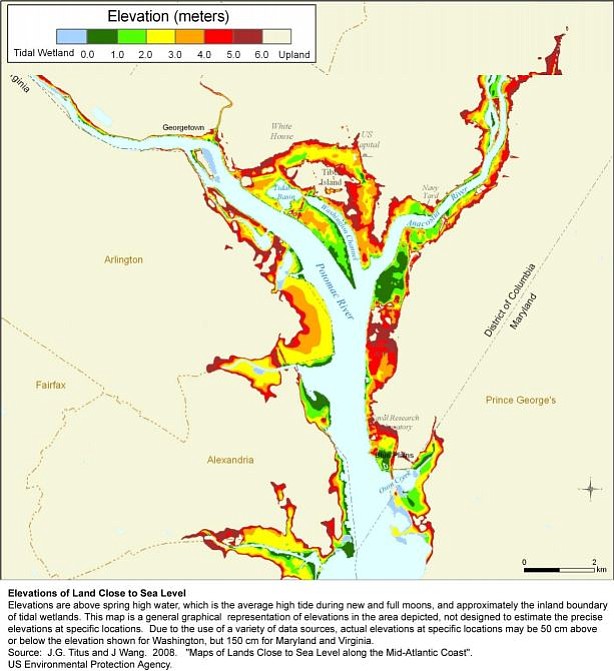What does the Alexandria of 2030 look like?
Is it a city laden with car traffic, choked with greenhouse gases and with sewers overflowing into the streets? Or is Alexandria a clean and efficient city, with widely accessible public and bicycle transportation?
The City’s Environmental Action Plan is the guideline for keeping the city on track with its environmental goals, and after several years of relative neglect, the city is working up update the plan with public help.
The city’s Environmental Action Plan 2030 was originally adopted in 2009 with the goal of being updated every five years, but budget constraints and other city priorities pushed that update back. Now, however, work has begun on updating the Environmental Action Plan. At a Dec. 4 kickoff event in City Hall, the Sister Cities’ room was packed with local citizens.
The city has changed in many ways since 2009, and most of the meeting was a recap of some of the largest environmental shifts in Alexandria. The closure of the GenOn plant in 2012, the largest air polluter in the region, was cited as one of the biggest environmental successes in the city’s recent history, though environmental work is still required at the site. Wetlands and stream restoration projects have taken place across the city, notably at Windmill Hill Park and Four Mile Run.
For local transit, despite falling Metro numbers in the region, other forms of regional transit have been on the rise. Alexandria’s bikeshare ridership has increased from 17 percent in 2015-2016 to 24 percent in 2016-2017. The Metroway, connecting Braddock Road and Potomac Yards to Crystal City has increased usage by 44 percent annually. The city has also implemented a trolley system in Old Town, with five hybrid-electric trolleys running up and down King Street.
The presentation also laid out preliminary goals for the next few years. The biggest topic, and the largest environmental crisis in the city, is the implementation of the Sanitary Sewer Long Term Control Plan, a plan required by the state to build a new sewer system to replace Old Town’s current combined stormwater-sewer system.
The update also proposes to add increasing the tree canopy from 34 percent to 40 percent. The plan also calls for a reduction of greenhouse gases per person from 13 to 10 metric tons.
Several members of the public were people who had been involved with the creation of the original Environmental Action Plan.
“I think the idea is that this was a living document revisited all the time,” said Joy Pochatila. “If parts of it get thrown away, it’s because there are better ideas. It’s going to be a painful process, the update, I’m sure; but I’m encouraged this process is happening. It should have been happening for a while.”
Peter Pennington, former chair of the Environmental Policy Commission, said he hoped that specific education goals would be included in the plan.
“Now that the country has entered the dark ages in terms of science is concerned, I think education is something you should seriously look at,” said Pennington. “We tried to have education for the children, but there were changes of staff and it never really got going. That was perhaps a failure. As much as you are fighting budget, we also had to fight time constraints. Teachers never have time … For rest of the city; not for nothing did we add recycling bins along King Street. It was not just to boost recycling, it was to send a message. We need to do something dramatic, for the sake of education, to bring in the city and to make everyone proud they live in an eco-city.”
Public outreach for the Environmental Action Plan update will continue with a series of “cafe” meetings in February and March 2018. The plan will be publicly reviewed on Earth Day, April 28 with phase one of the update presented to the City Council in May.


